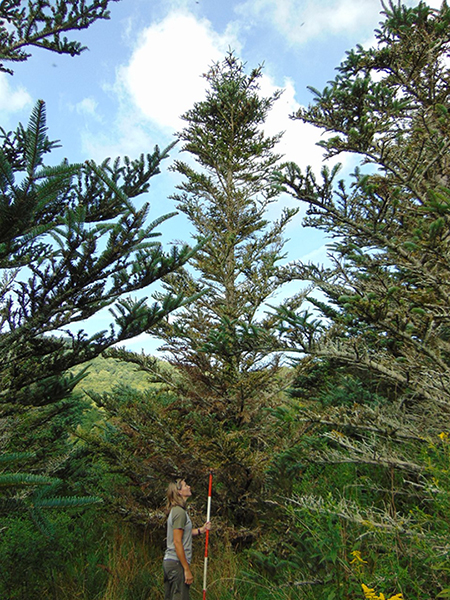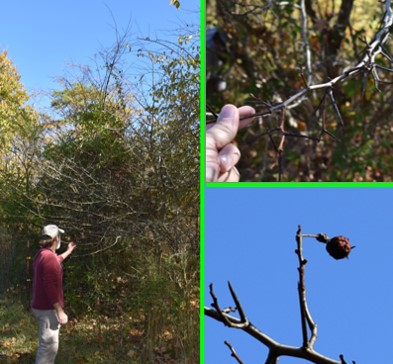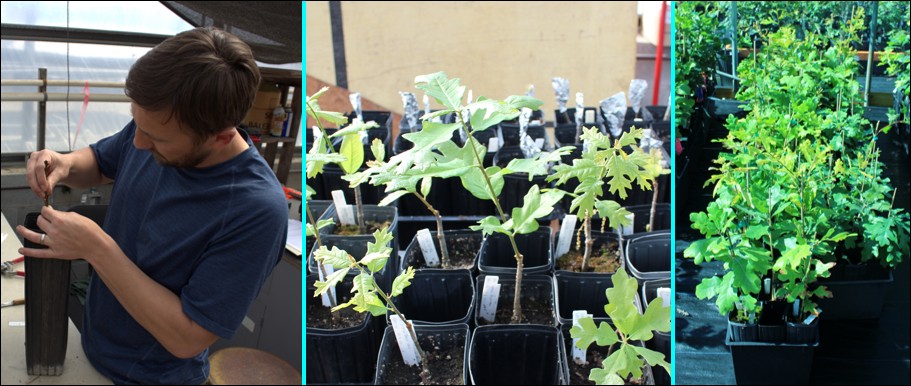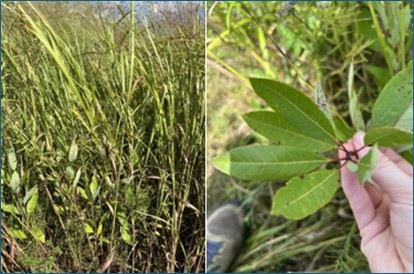The State of Tennessee has a wide range of physiographic provinces, which are reflected by a great diversity of plant species, including forest trees and shrubs. The Tennessee Rare Plant List (Crabtree, Todd. 2021. Tennessee Natural Heritage Program. Rare Plant List. 57 pp. (PDF) ranks species for relative occurrence within the state. According to this publication:
- S1– Extremely rare and critically imperiled in the state with five or fewer occurrences, or very few remaining individuals, or because of some special condition where the species is particularly vulnerable to extirpation from Tennessee.
- S2– Very rare and imperiled within the state, six to twenty occurrences and less than 3,000 individuals, or few remaining individuals, or because of some factor(s) making it vulnerable to extirpation from Tennessee.
- S3– Rare and uncommon in the state, from 21 to 100 occurrences.
UT-TIP presently conserves the genetic resources of five species that range from S1 to S3 in the State ranking system. Three of the species have or are being decimated by nonnative pests. The other two species are very rare within the state.
Fraser fir [Abies fraseri (Pursh) Poir.], State rank: S1S2.

Fraser fir populations have been under attack by the nonnative balsam woolly adelgid [Adelges piceae (Ratzeburg)] since the late 1950s. This pest targets reproductively mature trees, and many overstory populations have been severely decimated.
In the late 1980s, the UT-TIP collaborated with the Great Smoky Mountains National Park and the USDA Forest Service, Eastern Region Genetic Resources Program to establish two conservation plantings. These plantings preserve genetic resources from different southern Appalachian mountaintops, ensuring the survival of Fraser fir genotypes for future restoration efforts.
Harbison hawthorn (Crataegus harbisonii Beadle) State rank: S1.

The Harbison hawthorn is among the rarest woody plant species in North America. Until recently, it was known from only two remaining trees near Nashville, Tennessee. That changed in 2019, when a small population of about 91 individuals was discovered in Obion County, Tennessee.
In collaboration with the Natural Resources Conservation Service (NRCS), the UT-TIP successfully grafted more than 20 individuals from the Obion County population and one Nashville genotype (using scions from existing grafted trees). These efforts led to the creation of a seed orchard at the UT AgResearch and Education Center at Milan (read the published study here).
Half of the Milan orchard was planted in March 2025, with the remainder to be planted during the winter of 2025–26. Two additional orchards are also planned: a seedling seed orchard at the UT Ames AgResearch and Education Center, and a grafted orchard at the East Tennessee State Nursery.
Together, these orchards will conserve the genetic resources of Harbison hawthorn and eventually supply the Tennessee State Nursery with seed for restoration and reintroduction of this exceptionally rare species to its native landscape.
Sand post oak [Quercus margarettae (Ashe) Small], State rank: S1.

In Tennessee, the Sand post oak is found in only a single population at the Tennessee Wildlife Resources Agency’s Wolf River Wildlife Management Area. In the past, UT-TIP collected acorns from some individuals to establish a seed orchard. However, seedlings from these acorns may have been hybrids with the nearby Post oak (Quercus stellata Wangenh.), as both species grow intermixed.
In 2025, scions were collected from 26 Sand post oak trees and grafted onto containerized Post oak rootstock. This effort resulted in 83 successful grafts from 24 trees. These grafts will be planted as a seed orchard at the UT AgResearch and Education Center at Milan during the 2025–26 winter, ensuring the Tennessee genetic resources of this rare oak are preserved.
Eventually, the orchard will supply acorns to the East Tennessee State Nursery to grow seedlings for restoration projects, helping reestablish Sand post oak across its native range in Tennessee.
Sand cherry (Prunus pumilla L.), State rank: S1.

The Sand cherry is a low-growing, highly variable shrub that forms dense thickets by sprouting from rhizomes. It is one of the rarest woody plants in Tennessee, found primarily on wet pasturelands maintained by prescribed burning in the oak barrens of the state’s central region.
Over the past 50 years, P. pumila has been recorded at only five sites. A 2025 survey revealed that the species now persists at just two sites, growing no taller than the surrounding grasses.
To conserve this rare shrub, scions were collected from existing plants and chip-budded onto black cherry rootstock. If successful, these clones will be planted in a protected seed orchard to produce seeds for restoration and help ensure the Sand cherry remains part of Tennessee’s natural landscape.